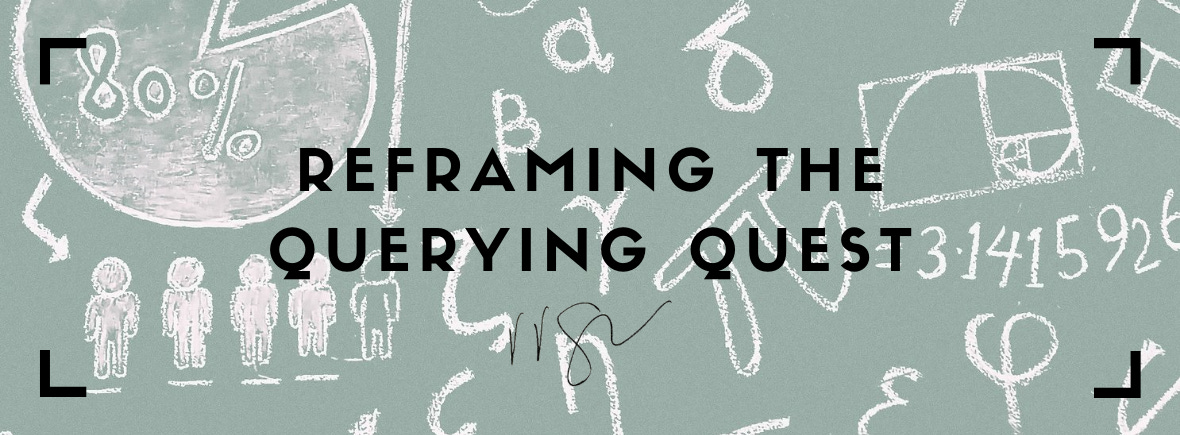Note: A version of this post first appeared in the opening minutes of episode 087 of the R.R. Campbell Writescast. All querying statistics are up-to-date as of the date of recording.
I want to speak directly to novelists now, particularly those who are querying, as one's querying quest is, almost universally, rife with far more rejection than acceptance.
It becomes all too easy, then, to look at one's querying statistics and fret whether our work is good enough, whether it will ever find a home.
But, as we'll see in the following exploration of my current querying journey, there are ways to reframe our querying statistics such that they encourage us rather than disparage us.
So let's explore the how of this by using my manuscript When the Stars Conspire—or, as I have nicknamed it, "cranberries"—as an example.
Why cranberries? Because it takes place on a cranberry farm in northern Wisconsin. Why When the Stars Conspire? Hopefully the one sentence pitch for this manuscript helps clarify that.
After narrowly surviving a plane crash, a mysterious pilot with amnesia and a rural Wisconsin cranberry farmer must rediscover a shared past while overcoming otherworldly foes—from within and without—in order to secure a future for all sentient life in the universe.
Whew. There’s a lot there. Is this the perfect pitch? Probably not, but the good news is I don’t have to use it all that often—yet.
I mean, I am, in fact, querying this manuscript, but so far, I’ve been able to rely on a different hook to kick off every one of my queries. And that hook?
Zachary Carmichael is going to die, and all he’s left with are questions.
Bump. Set. Spike.
Personally, I’m proud of that opening line, but what has it and the rest of my query earned me? We'll crunch the numbers momentarily, but first, some context.
Seeking the representation of a literary agent is a daunting endeavor, and this manuscript would know. This is the second time it’s been on query road, in fact, after I was offered a contract for this novel in 2018.
I ultimately turned down this contract when it became apparent the small press that offered it would not be a good fit for me or my work, and after refusing that contract, I simply never got back to sending it elsewhere until after I'd completed a new round of revisions in March 2020.
But I've been back at it since then, and here are the numbers thus far—
52 queries sent
25 pending with no response
Two partial requests
One full manuscript request
25 rejections
These numbers won’t add up, but that’s because one of those partial requests would later prove to be a rejection. That said, for the purposes of this conversation, we'll ensure we give credit where credit is due and at least acknowledge the fact a partial request was made.
That aside, what does any of this mean? Twenty-five rejections could feel like a lot. Even if rejections don’t quite sting as much as they used to, it feels like we’re at almost a ninety-five percent rejection rate, at least based on the raw numbers.
But let’s dig further and see if we can frame these statistics a bit differently for ourselves, which I feel will be especially helpful if you’re someone who’s querying and confronting this yourself.
Let’s ignore the 25 pending queries with no response so far. After all, we can’t say it’s a rejection and we can’t say it’ll be a partial or full request yet either. Think of these as Schrödinger’s submissions. They’re both alive and dead at the same time, and knowing that doesn’t really do us any good either way.
With Schrödinger’s submissions set aside, however, we then have a total of 27 queries with the below breakdown.
One full request
Two partial requests
24 outright rejections
Again, we'll ignore that one of those partials would later become a rejection; we can’t assume all partial requests will eventually become rejections, after all.
Looking at these statistics, our hit rate is now eleven percent!
Based on these numbers, we’d expect approximately eleven percent of those pending submissions to become either partial or full requests, which would mean, of the 25 still-pending queries, we could see another three partial or full requests come in!
Now, rather than focusing on the prospect of another wave of rejections rolling in, doesn’t it feel better to know there are a handful of agents out there, who, if the numbers can be believed, will, in the coming weeks or months, be reaching out to ask for more?
Personally, I cherish the thought.
Perhaps that’s a thought worth keeping in mind for all of us. Whether we’re querying now, have queried in the past, or will query in the future, remember the querying process is a numbers game.
More than that, really, it’s a people game.
Because on the other end of every one of those queries is another reader, a prospective cheerleader and advocate for your work. On the other end of every one of those queries is a person.
You just have to have the patience to find the right one for you and for your work.
So does this help, reader? Does it hurt? What are the numbers looking like for you on your querying journey?
Share them with me in the comments below. Tell me how much you’re looking forward to that next partial or full request rolling in. Tell me, too, if you’re worried about your query, about your synopsis, about your pitch in general. I want to help. We all do.
Because, and I promise you this is true, I want to see your book and my book side by side on the same bookshelf someday.





